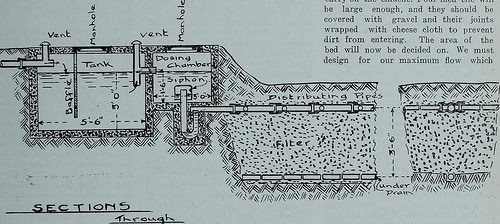This article will cover how tree roots can harm drain field lines. In every property, there is always room for a patch of garden or even a few trees. The presence of trees and small plants make it possible for you to enjoy nature at its best. However, you still have to consider the other components of your entire property before you decide on a garden. One of the most important elements in your yard is your septic system. It is the wastewater treatment system that your household has access to because it cannot be reached by the municipal sewage system. That is why it’s one of your main responsibilities to make sure that your septic system remains optimal. Tree roots can harm drain field lines. Take care that they don’t lead you to a failed system. If they do, your entire property will suffer and you would have to spend thousands of dollars in replacements or repairs.
You have to admit, having a septic system is like having a car or having a home, You always have to make sure that everything about it is fine so that you could use it for as long as you want. The drain field lines of your septic system is the one that you should focus on because this is where plants and trees are usually located. Some property owners establish a garden near or over the drain field lines thinking that the septic tank won’t be affected. The drain field is where the last part of the wastewater treatment happens. It is where the final treatment and purification of the effluent are performed by the aerobic bacteria and the biomat. It is important that the aerobic bacteria are kept sustained with oxygen so that the biomat could be kept in the right numbers.
One of the main reasons why a drain filed fails is root invasion. Trees are the highest form of plants that your property could ever have. A tree has a very complex root system. Their roots are made this way because they are large living organisms that need to be sustained consistently every single day. To achieve this, the tree roots should be specialized enough to grow as far and as deep as they can to penetrate the richest source of water and nutrients in any land they grow in. In your case, they have to make sure they access your drain field. The growth of tree roots depends on the amount of annual rainfall, the location, and the overall availability of water and nutrients. Surely, if you tree is planted near your drain field lines, its roots will penetrate this part of your septic system to feed.
A typical modern septic system only requires about two feet of soil as cover. This makes the deep rooted trees such as Quercus sp. or oaks not that threatening at all. These trees usually have their large main roots penetrating very deep into the soil, missing a huge part of the septic system, including your drain field lines. However, tree roots could still invade the drain field lines because of the perforations that the pipelines have. These holes give direct ease of access for the tree roots that surround the area. Drain field lines are usually made of plastic (PVC) which gives in to the pressure of the invasive tree roots. Once the roots have entered the pipes, the general direction of the root’s growth will be influenced by the flow of effluent. The roots will continue to grow into the pipes to establish where the effluent is coming from. They will then form a mesh that will expand and damage the pipelines in the drain field. Eventually, the roots will grow around the pipes as well, completely taking over the system. If this is not treated, the wastewater will back up, overflow, and flood your entire property. You would have to consult your septic expert about replacing the entire septic system because it would already fail to function.
Make sure that you talk to a licensed arborist first before thinking of planting anything in your property. Plant your trees as far away from the drain field lines as possible because they can really do a lot of damage.
